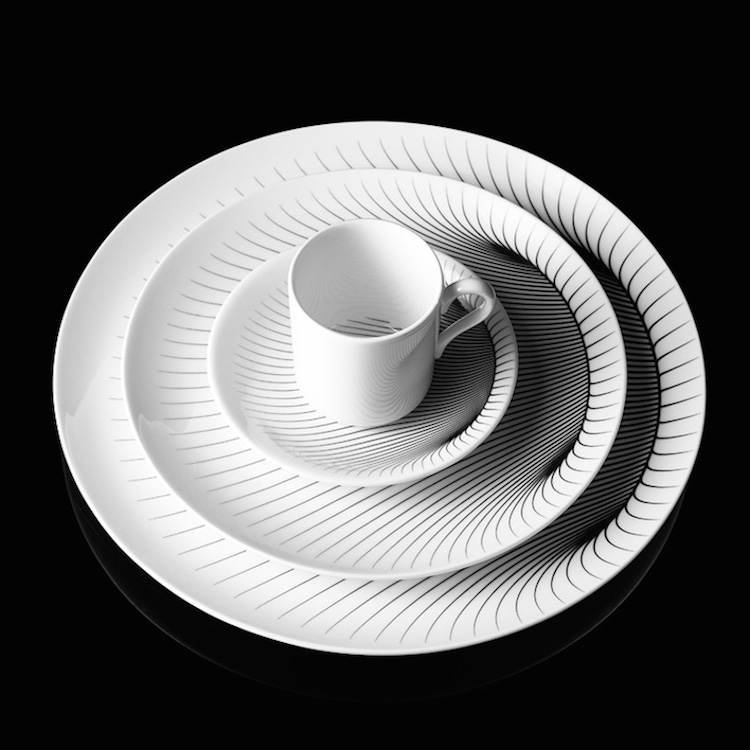PARIS — Designer and architect Zaha Hadid passed away this March, but her studio released a collection of high-contrast home wares that exhibited at this year’s Maison & Objet’s Fall 2016 fair (Paris, September 8-12).
Above image: Zaha Hadid, “The Bone” set from her Fall collection.
According to the studio, Hadid completed work on the set earlier this year and used it as a means to explore the link between her design and architecture practices. Hadid, 65, died of a heart attack at a Miami hospital. The Pritzker Prize-winning architect’s studio is now run by Patrik Schumacher who announced that the firm would continue to grow. That’s also the case with her design practice, according to what we see here:
“My product designs and architecture have always been connected; some of our earliest projects were designs for products and interiors. These design pieces are very important to me and my team. They inspire our creativity by providing an opportunity to express our ideas through different scales and through different media; an essential part of our on-going design investigation,” Hadid had explained during her retrospective exhibition at the Guggenheim Museum, New York.
Working with Hadid’s extensive archive of sketches, drawings and paintings that have been meticulously compiled over the past 40 years, her team will continue the work she instigated.
As the world celebrates Zaha Hadid’s remarkable legacy, Collection 2016 conveys the unparalleled innovation that so defined her work. Designed with Hadid’s unwavering belief in the power of invention in a diversity of materials both traditional and contemporary, from bone china to modern resins, each piece is unmistakably Zaha.
Designboom reports that the set plays with contrasting color and materiality. The sets are made from traditional bone china and ceramic, set against more modern resin and acrylic. Among the works, we like “The Bone” tableware set, pieces that come in white bone china scored by hair-thin black lines. Designboom reports that the editions were born from suprematism:
zaha’s fascination with suprematism is seen in ‘the bone’ table ware. the russian abstract art movement developed by kazimir malevich in 1913 resulted in the creation of this limited edition bone china range. it characteristically utilises characterised by simple geometrical shapes such as circles, squares, lines and rectangles. the design is accented with gold leaf details.
Do you love or loathe these works of contemporary ceramics? Let us know in the comments.













If you want to get a great deal from this piece of writing then you have
to apply these strategies to your won web site.
Beautiful work!!!